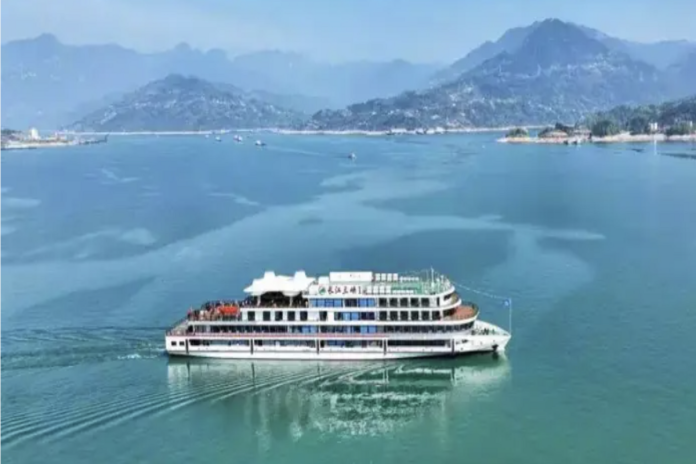In Karnataka, a wave of transformative development is sweeping across its waterways. With numerous river courses designated as national waterways, the state is embarking on a series of ambitious projects aimed at enhancing transportation infrastructure and promoting eco-friendly modes of inland water transport.
According to the most recent report, multiple projects are underway to enhance National waterways in Karnataka. Initially, there is a proposal to upgrade the Ghataprabha River stretch from Almatti to Bagalkot (National Waterway 41) at an estimated cost of Rs 12.20 crore.
Another project is centred around the development of the Kali River with an investment of Rs 14.46 crore (National Waterway 52).
For travellers heading from Bengaluru and other regions to Almatti for the backwater experience, there are plans to establish a 15-kilometre waterway between the Almatti backwaters and the Herkal Bridge cum barrage as part of the Sagarmala project, with an expected expenditure of Rs 12.2 crore.
Officials are also considering the construction of jetty stations at both Almatti and Herkal, facilitating boat and barge transportation. Additionally, there’s a proposal to permit seaplane landings at the Almatti backwaters.
An official stated, “We are also actively working on the Gurupura River (National Waterway 43) with a budget of Rs 29.62 crore and the Aghanashini River (Tadadadi to Aghanashini) in Uttara Kannada district with an allocated cost of Rs 20 crore. In support of these endeavours, we are constructing 11 floating jetties,” reports the Economic Times.
National waterways in Karnataka:
- Bheema (NW 21 – 139 KM)
- Ghataprabha (NW 41 – 112 KM)
- Gurupur (NW 43 – 10 KM)
- Kabini (NW 51 – 23 KM)
- Kali (NW 52 – 53 KM)
- Malaprabha (NW 67 – 94 KM)
- Panchagangavali (Panchagangoli) (NW 76 – 23 KM)
- Sharavati (NW 90 – 29 KM)
- Tungabhadra (NW 104 – 232 KM) – Karnataka, Telangana & AP
- Udyavara (NW 105 – 15 KM)
Significance of National Waterways
To promote Inland Water Transport (IWT) throughout the country, the National Waterways Act of 2016 designated 111 waterways as National Waterways (NWs), effective from 12 April 2016.
The development of National Waterways aims to promote environmentally friendly and efficient modes of inland water transport (IWT) that complement existing rail and road transport systems wherever feasible.
Inland Water Transport (IWT) mode is widely recognised as an environment-friendly and cost-effective mode of transport. As per the RITES Report of 2014 on Integrated National Waterways Transportation Grid, 1 litre of fuel moves 24 tonne-km on road, 95 tonne-km on rail and 215 tonne-km on IWT.
The official emphasised, “The benefits of waterways go beyond their economic advantages; they are also environmentally friendly. According to the central government, the operating cost of a waterway is only 0.0048 litres per tonne-kilometre (TKM), compared to 0.0313 litres per TKM for roads and 0.0089 litres per TKM for railways.
Similarly, the vehicle operating cost for waterways is Rs 0.843 per TKM, while for roads it is Rs 1.170 per TKM and for railways, it is Rs 1.009 per TKM. Moreover, waterway accidents are negligible, with road accidents at 0.620 per TKM and rail accidents at 0.0010 per TKM.
Summing up
In summary, the development of national waterways in Karnataka is a strategic step towards improving transportation efficiency, promoting eco-friendly modes of travel, and stimulating economic growth.
These projects offer promising opportunities for trade and tourism while showcasing the cost-effectiveness and safety advantages of water-based transport.


